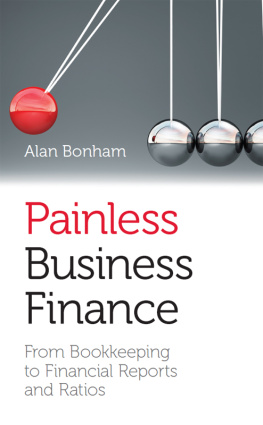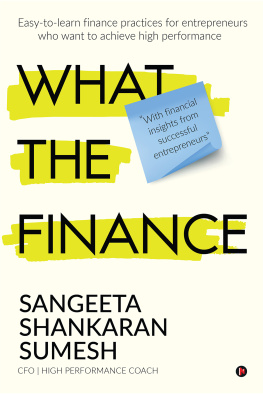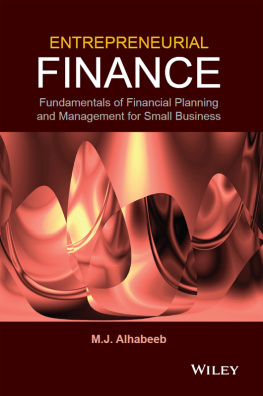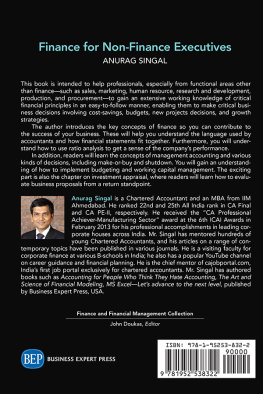Copyright 2014 by McGraw-Hill Education. All rights reserved. Except as permitted under the United States Copyright Act of 1976, no part of this publication may be reproduced or distributed in any form or by any means, or stored in a database or retrieval system, without the prior written permission of the publisher.
ISBN: 978-0-07-182406-4
MHID: 0-07-182406-5
The material in this eBook also appears in the print version of this title: ISBN: 978-0-07-182539-9, MHID: 0-07-182539-8.
eBook conversion by codeMantra
Version 1.0
All trademarks are trademarks of their respective owners. Rather than put a trademark symbol after every occurrence of a trademarked name, we use names in an editorial fashion only, and to the benefit of the trademark owner, with no intention of infringement of the trademark. Where such designations appear in this book, they have been printed with initial caps.
McGraw-Hill Education eBooks are available at special quantity discounts to use as premiums and sales promotions, or for use in corporate training programs. To contact a representative please visit the Contact Us page at www.mhprofessional.com.
This publication is designed to provide accurate and authoritative information in regard to the subject matter covered. It is sold with the understanding that neither the author nor the publisher is engaged in rendering legal, accounting, securities trading, or other professional services. If legal advice or other expert assistance is required, the services of a competent professional person should be sought.
From a Declaration of Principles Jointly Adopted by a Committee of the American Bar Association and a Committee of Publishers and Associations
TERMS OF USE
This is a copyrighted work and McGraw-Hill Education and its licensors reserve all rights in and to the work. Use of this work is subject to these terms. Except as permitted under the Copyright Act of 1976 and the right to store and retrieve one copy of the work, you may not decompile, disassemble, reverse engineer, reproduce, modify, create derivative works based upon, transmit, distribute, disseminate, sell, publish or sublicense the work or any part of it without McGraw-Hill Educations prior consent. You may use the work for your own noncommercial and personal use; any other use of the work is strictly prohibited. Your right to use the work may be terminated if you fail to comply with these terms.
THE WORK IS PROVIDED AS IS. McGRAW-HILL EDUCATION AND ITS LICENSORS MAKE NO GUARANTEES OR WARRANTIES AS TO THE ACCURACY, ADEQUACY OR COMPLETENESS OF OR RESULTS TO BE OBTAINED FROM USING THE WORK, INCLUDING ANY INFORMATION THAT CAN BE ACCESSED THROUGH THE WORK VIA HYPERLINK OR OTHERWISE, AND EXPRESSLY DISCLAIM ANY WARRANTY, EXPRESS OR IMPLIED, INCLUDING BUT NOT LIMITED TO IMPLIED WARRANTIES OF MERCHANTABILITY OR FITNESS FOR A PARTICULAR PURPOSE. McGraw-Hill Education and its licensors do not warrant or guarantee that the functions contained in the work will meet your requirements or that its operation will be uninterrupted or error free. Neither McGraw-Hill Education nor its licensors shall be liable to you or anyone else for any inaccuracy, error or omission, regardless of cause, in the work or for any damages resulting there from. McGraw-Hill Education has no responsibility for the content of any information accessed through the work. Under no circumstances shall McGraw-Hill Education and/or its licensors be liable for any indirect, incidental, special, punitive, consequential or similar damages that result from the use of or inability to use the work, even if any of them has been advised of the possibility of such damages. This limitation of liability shall apply to any claim or cause whatsoever whether such claim or cause arises in contract, tort or otherwise.
This book is dedicated to my two beautiful, brilliant, and
selfless daughters, Akilah Naeem and Ariel Nailah!
Contents
Preface
T o this day, one of the sights that is most pleasing to me is a room full of people who are earnestly learning entrepreneurial finance. For 18 years, it has been my great pleasure to educate and inspire more than 10,000 people of all types and in a variety of settings. In addition to the thousands of degree-seeking MBA students in Executive MBA and full- and part-time programs, I have taught more than a thousand students from the National Minority Business Supplier Program, the National Football League, the National Basketball League, the Urban League of Chicago, and the Network for Teaching Entrepreneurship, and given countless 3-hour sessions inside of other professors programs. Recently I taught a session on entrepreneurship at the United Nations (UN), and I have also taught Executive MBAs in China, Germany, Hong Kong, Toronto, Miami, Boston, and New York. Soon I will be going to India and the Philippines, and hopefully after that to Brazil, Nigeria, and other nations on the continents of Africa, South America, Asia, and Europe. I hope to teach entrepreneurial finance students on every continent in the world several times within the next 3 years.
I can tell you that what I enjoy the most in my courses is bringing a few of my former students to my classroom as guest speakers to discuss their entrepreneurial journey. They share what students like to hear as the rest of the story from the case study that was just discussed in class. One of my favorite guest speakers is former student Doug Cook. He is the protagonist in the case study I wrote titled Acquiring a Business. When Doug began as an MBA student, he had no interest in entrepreneurship. That quickly changed once he became a student. Two years after graduating, he purchased the first of 3 multimillion-dollar companies, in which he grew revenues more than 400% in 5 years!
I love the case study method of teaching entrepreneurial finance. I learned it as a student at the Harvard Business School and practiced it as a case study writer for a year after graduating. Professor Bill Sahlman, my professor, who created the entrepreneurial finance course more than 25 years ago, was the best at using the case study method. When I put together my course on entrepreneurial finance, each of the 10 weeks involves a case study discussion. The situation-based learning that occurs in case study discussions provides a close approximation to the decision making that takes place in entrepreneurial settings.
Students read the case in advance, prepare their analysis, and come to class ready for the discussion. I keep a list of all the students, saying which of them I have yet to cold-call and which of them I have already cold-called. So during each of the class sessions, whether it is week 1, week 8, or the last class, I know whom I have yet to cold-call. And my students like this method. Ive never had a teacher evaluation that stated, I wish Rogers did not cold-call us in class. During the discussion, without fail, especially in the first week or two of the course, I will ask a student, Whats your answer, Mr. MBA? In reply, he will exclaim confidently, with his analysis, It depends, and will start giving his explanation of the merits of deciding either way. Before his next breath, I stop him with a loud, thundering roar: Depends is a brand of diaper; it is not an answer to an important decision in entrepreneurial finance. You can feel the hearts of all the students sink as their dependable explanation is removed from their arsenal. Well, this makes sense, right? How many employees want to hear their leader say, It depends? My entrepreneurial finance students must have the financial acumen and internal fortitude to make a decision, even though they do not have all the information. You must learn how to act in the face of uncertainty, and my students get that experience.








